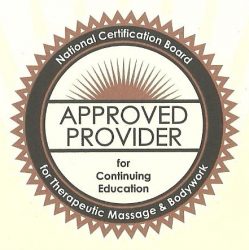The Entry-Level Analysis Project Final Report and the Entry-Level Education Blueprint were released today, and it’s a whopper…266 pages in the Report, and 527 pages in the blueprint. Obviously, I haven’t read that all this morning. I do want to take the time to express my appreciation for the collaboration among the Coalition (ABMP, AFMTE, AMTA, COMTA, FSMTB, MTF, and NCBTMB) and to Anne Williams of ABMP in particular, for spearheading the project. Both documents were co-authored by the ELAP workgroup, which included Pat Archer, Clint Chandler, Rick Garbowski, Tom Lochhaas, Jim O’Hara, Cynthia Ribeiro, and Anne Williams.
According to the Report, at the initial meeting of the Coalition in 2011, two pressing issues were identified: the inconsistent quality, depth, and focus of entry-level massage programs, and the lack of licensure portability from state to state.
The big recommendation is that 625 hours of education are needed just to give students the core basics that they need for entry-level competency. According to the report, currently 28 states only require 500 hours; 7 require between 570 and 600, and 10 states require more than 625 hours. In my opinion only, no matter how wonderful the Blueprint, those states that already have higher standards won’t be inclined to dumb it down for the rest. New York and Nebraska, for example, both have 1000-hour requirements. I don’t see portability happening there–ever–unless every other state decides to come up to that level. However, the Report does reference a 2012 study that states the average massage program in the US is 697 hours–so maybe even in the states with the 500-hour requirement, there is a tendency to do more than required–and that’s nice.
For those schools that are less than 625 hours, this recommendation would undoubtedly increase financial costs to the owner that would have to be passed along to the student.
The shocking news, to me, is the statement that 40-50% of graduates are leaving the field within two years of graduation! I would be interested to know exactly how those figures were arrived at.The Report cites unrealistic expectations about the physical demands of massage and compensation, and the evolving life circumstances of 20-somethings. I’m personally not sure how relevant the 20-somethings are; it’s been my own experience in the past 15 years that there are as many middle-aged people (whatever that is, nowadays) that take up massage as a second career as there are young people who jump in right out of high school.
The workgroup would like to encourage everyone to pay more attention to the core curriculum than the hours. According to the document, this can serve everyone:
- The Federation can use it as a guideline for the Model Practice Act
- The state boards can use it in setting hours for education
- The AFMTE can use it in setting teacher standards
- COMTA can use it in evaluating massage and bodywork criteria for accreditation
- the NCBTMB can use it for identifying entry-level vs. advanced knowledge for Board Certification
- Professional membership associations can use it in shaping membership criteria
- School owners, administrators and faculty can use it in validating curricula and adopting consistent learning outcomes
- Potential massage therapy students, as they are deciding where to enroll.
There is, within the document, the subtopics of Eastern bodywork, TCM, concepts of qi and all the accompaniments to that, with the caveat that schools may choose to integrate that according to their own philosophy. The focus is on the application of Shiatsu, tui na and Thai massage, which I will not argue the efficacy of, without personally buying into the theory behind them. I’m not going to have this argument here because it wears me out, and frankly, I’m outnumbered.
There is no doubt that a huge amount of work went into this project. Personally, I gave a lot of feedback on it during the calls for comments that happened some months ago, as did several other educators I know. I wasn’t crazy about this idea when it was initially introduced, and I was further distressed by the way the review and comment process was set up…I didn’t think it was good to have such a piecemeal approach to it, but in reality, I feel that the chance that many more people would have responded to the whole thing is probably relatively slim…it would have been just as long in any case. Anne Williams stated during one of the presentations on it that I attended last year that it isn’t perfect, but what is? I sincerely do commend everyone who gave of their time and effort on this huge undertaking. I plan to say more about it after I’ve read every page.

